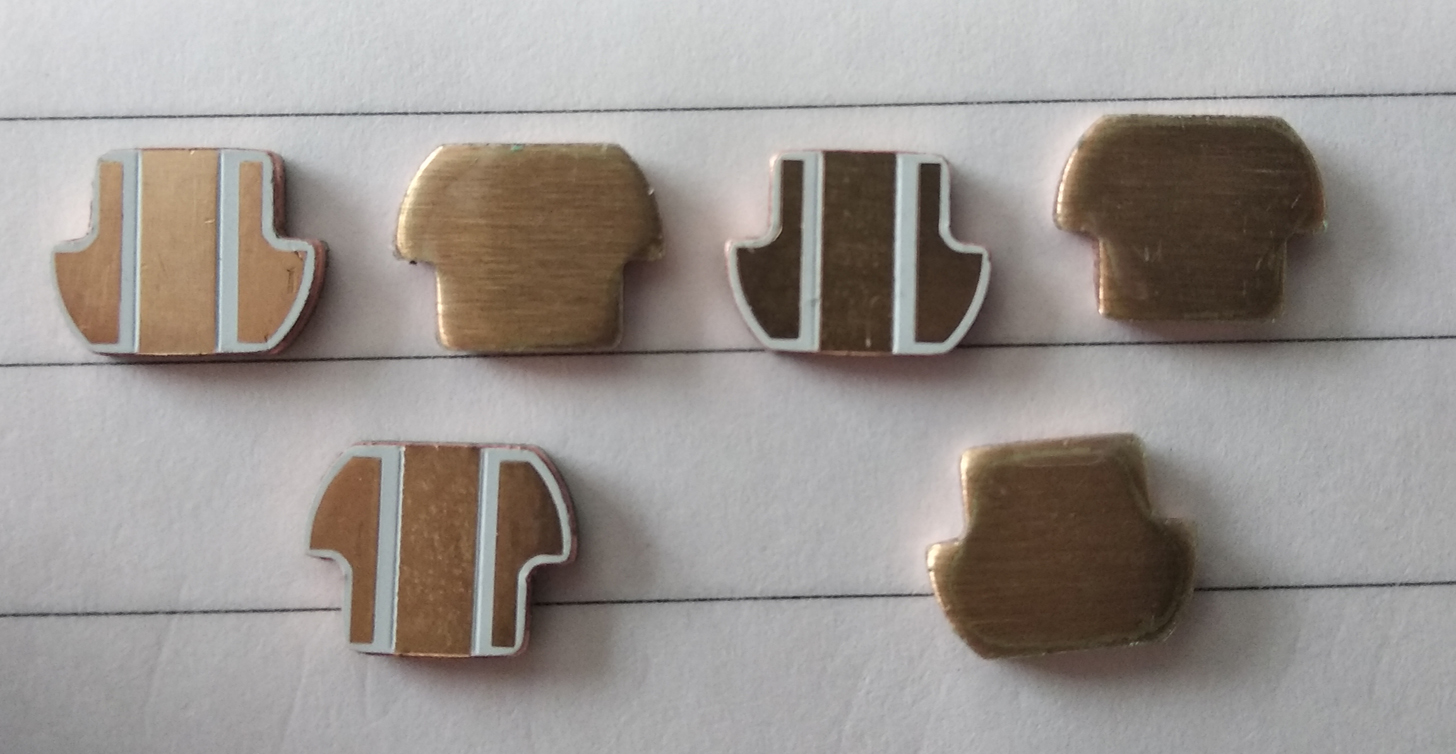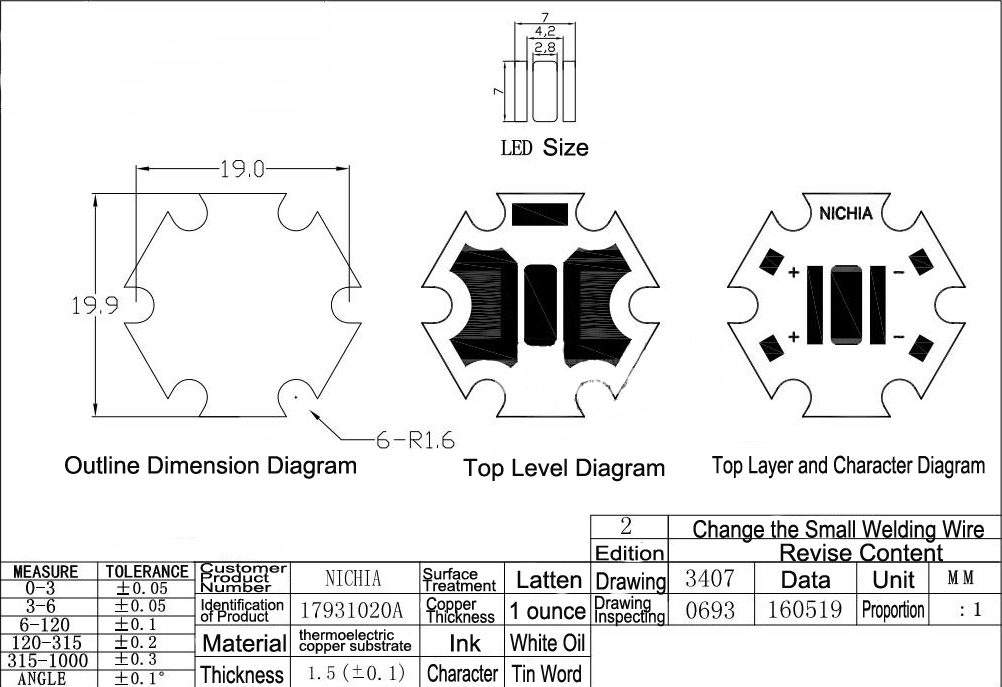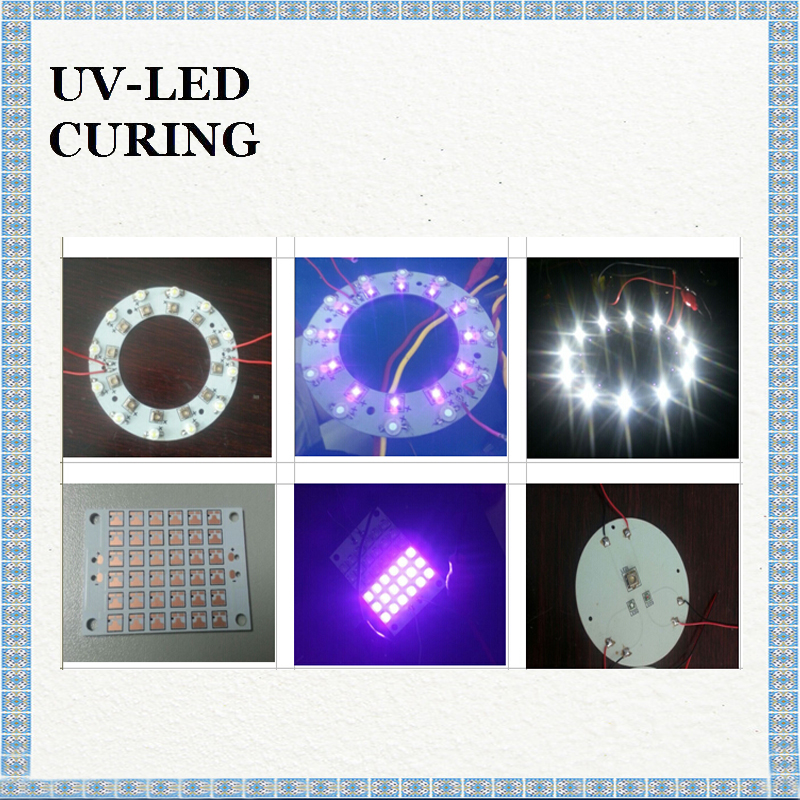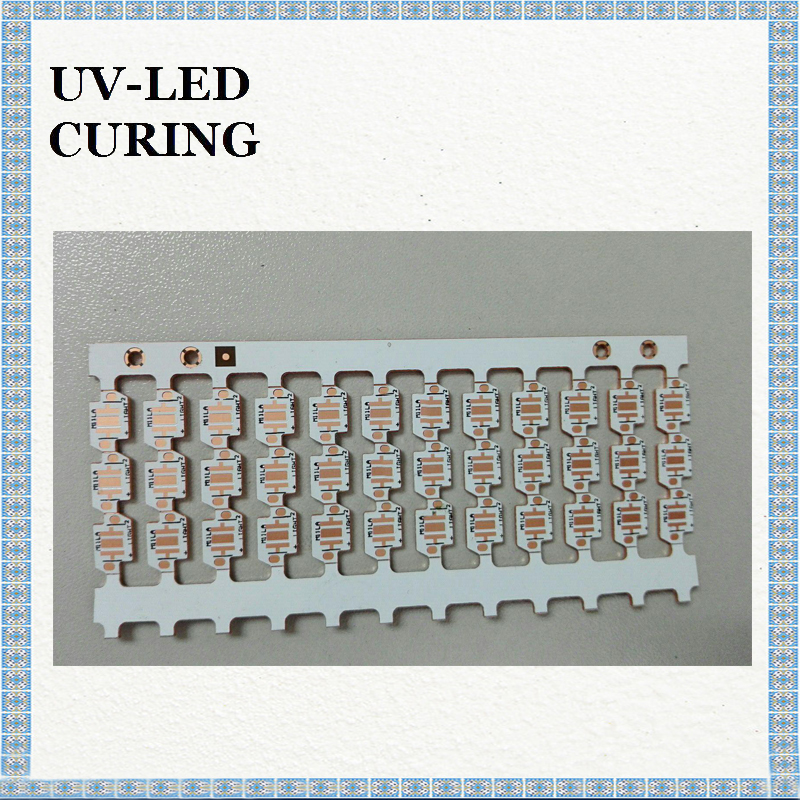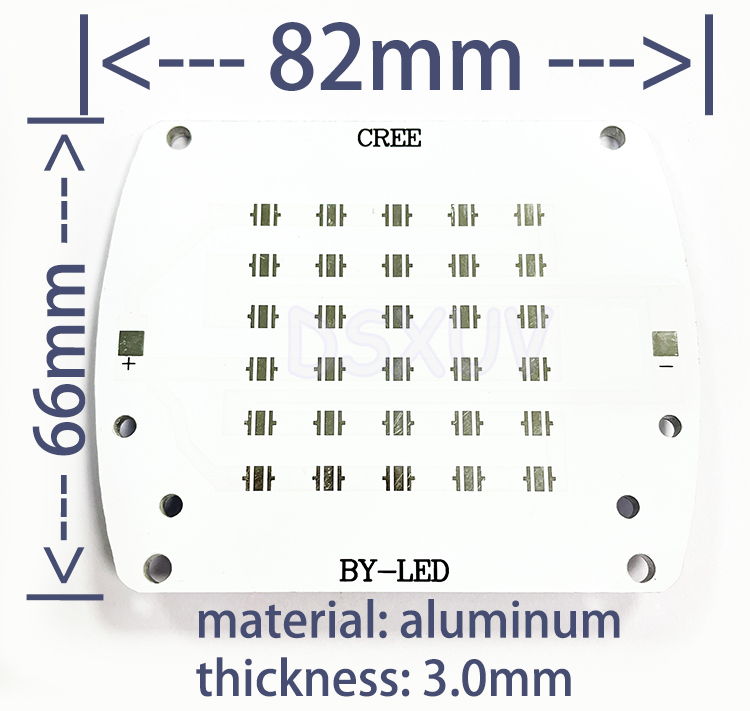Product Details
UV LED Modules Chip, high intensity and high power, is equipped with numbers of lights.
Key Features of Customized UV LED Module :
- Best thermally conductive substrates: thick film silver layer on aluminum nitride, or DBC (directed
bonded copper) on aluminum nitride that enable the high-power density;
- Eutectic soldering process instead of silver epoxy for die attach, improving thermal conductivity;
- “Known Good Die”, good brand of UV chips that have been tested reliable with good statistics;
four wavelength ranges: 360 - 370nm; 380 – 390nm; 390 – 400nm; 400 – 410nm.
- Thermally stable and UV stable silicone for encapsulation that were selected based on extensive
experimental test data;
- Long history on packaging UV light source with rich experience and lessons.
Part Number Specification of Replaceable UV LED Modules Chip 365-395nm :
Part number | Wavelength range (nm) |
MLUV64-360 | 360-370 |
MLUV64-380 | 380-390 |
MLUV64-390 | 390-400 |
MLUV64-400 | 400-410 |
Absolute Maximum Rating of High Intensity Ultraviolet LED Chip Curing UV Ink :
DC forward current (A) |
|
MLUV64-360 | 5.6 (0.7 per channel) |
MLUV64-380 | 10.0 (1.25 per channel) |
MLUV64-390 | 10.0 (1.25 per channel) |
MLUV64-400 | 10.0 (1.25 per channel) |
Power consumption (W) |
|
MLUV64-360 | 162 (2.5W per chip) |
MLUV64-380 | 295 (4.6W per chip) |
MLUV64-390 | 295 (4.6W per chip) |
MLUV64-400 | 295 (4.6W per chip |
LED junction temperature (°C) | 130 |
Operating ambient temperature (°C) | 50 |
Mechanical Dimension of High Performance UV LED Chip :
Dimension (mm x mm x mm) | 46.0 x 32.6 x 3.0 |
Emitting area (mm x mm) | 31.7 x 30.3 |

Electrical Characteristics of UV LED Chip LED Module for UV Curing Systems :
8 lines, each line has 8 LED chips connected in series; 8 lines are divided in 2 groups, each group has 4 lines;
the 4 lines in each group are connected in parallel at the ends.

Forward current (A) | Typical | Maximum |
MLUV64-360 |
| 5.6 (0.7 per channel) |
MLUV64-380 | 5.6 (0.7 per channel) | 10.0 (1.25 per channel) |
MLUV64-390 | 5.6 (0.7 per channel) | 10.0 (1.25 per channel) |
MLUV64-400 | 5.6 (0.7 per channel) | 10.0 (1.25 per channel) |
Forward voltage range (V) | Typical | Maximum |
MLUV64-360 |
| 28.8 - 32.8 (3.6 - 4.1 for a die) |
MLUV64-380 | 27.2 - 29.2 (3.4 - 3.65 for a die) | 29.2 - 32.4 (3.65 - 4.05 for a die) |
MLUV64-390 | 27.2 - 29.2 (3.4 - 3.65 for a die) | 29.2 - 32.4 (3.65 - 4.05 for a die) |
MLUV64-400 | 27.2 - 29.2 (3.4 - 3.65 for a die) | 29.2 - 32.4 (3.65 - 4.05 for a die) |
Power consumption range (watt) | Typical | Maximum |
MLUV64-360 |
| 160 - 186 (2.5 - 2.9 for a die) |
MLUV64-380 | 152 - 163 (2.38 - 2.55 for a die) | 294 - 326 (4.6 - 5.1 for a die) |
MLUV64-390 | 152 - 163 (2.38 - 2.55 for a die) | 294 - 326 (4.6 - 5.1 for a die) |
MLUV64-400 | 152 - 163 (2.38 - 2.55 for a die) | 294 - 326 (4.6 - 5.1 for a die) |
Connector 1 |
|
|
Connector 2 |
|
|
Optical Performance of Customized UV LED Chip 365-405nm :
Part Number | Peak wavelength range (nm), @25°C, @3.5A (0.7A per channel, note 1 |
MLUV64-360 | 360 - 370 |
MLUV64-380 | 380 - 390 |
MLUV64-390 | 390 - 400 |
MLUV64-400 | 400 - 410 |
FWHM (nm) | 15 |
Radiant flux (W), @25°C, @3.5A (0.7A per channel) | Min. | Max. |
MLUV64-360 | 51 (0.8W per die) | 64 (1W per die) |
MLUV64-380 | 64 (1W per die) | 77 (1.2W per die) |
MLUV64-390 | 64 (1W per die) | 77 (1.2W per die) |
MLUV64-400 | 64 (1W per die) | 77 (1.2W per die) |
Radiant flux (W), @25°C, @3.5A (0.7A per channel) | Min. | Max. |
MLUV64-360 | 74 (1.16W per die) | 95 (1.48W per die) |
MLUV64-380 | 92 (1.44 per die) | 113 (1.76W per die) |
MLUV64-390 | 92 (1.44 per die) | 113 (1.76W per die) |
MLUV64-400 | 92 (1.44 per die) | 113 (1.76W per die) |
Notes: The peak wavelength is measured with an accuracy of ±1nm
Thermal Performance of Low Temperature UV Light Source Module Curing UV Coating :
Thermal Resistance (°C / W) | 0.08 |
Cautions of Industrial Specialized UV Light Module :
UV LIGHT These devices are ultraviolet LEDs. During operation, the LED emits high intensity ultraviolet (UV) light, which is harmful to skin and eyes.
UV light is hazardous to skin and may cause cancer. Avoid exposure to UV light when LED is operational.
Precautions must be taken to avoid looking directly at the UV light without the use of UV light protective glasses. Do not look directly at the front of the LED or at the LED’s lens when LED is operational.



